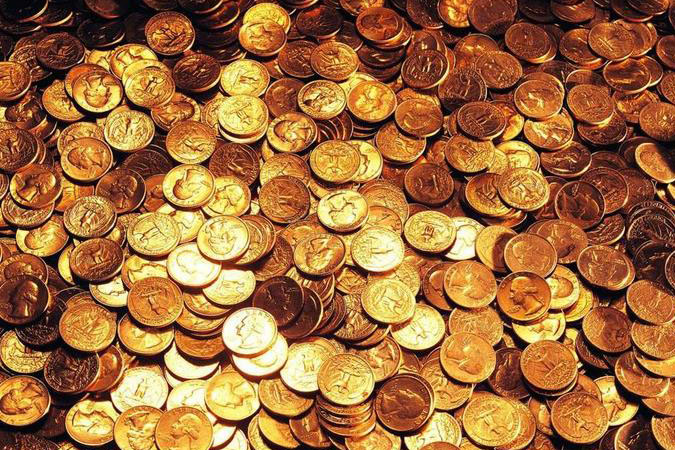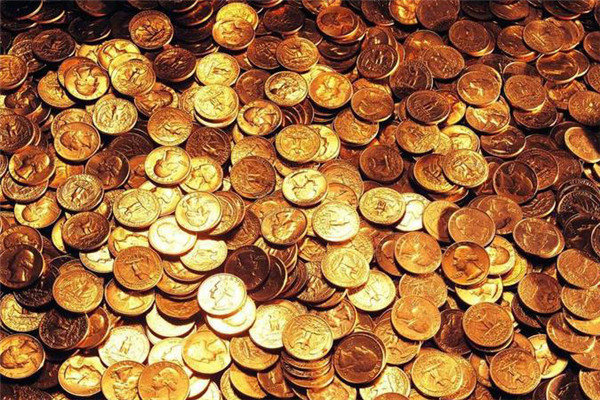The history of gold coins is closely related to the evolution of the European
monetary system, from the silver standard to the gold and silver replica, and
then to the gold standard. This historical process is full of twists and turns
and inspiration. This article will take you back to this period of history and
help you understand the role of gold coins in international trade and exchange
rate systems.

The European Commercial Revolution and the Rise of Gold Coins
From the millennium AD to the 18th century, before the Industrial Revolution
in England, Europe experienced a period of commercial revolution. During this
period, trade between the Middle East and North Africa led to the gradual influx
of gold coins into Western Europe, which became the settlement currency for
international trade. In 1252, merchants in Florence, Italy, created a gold coin
specifically designed for international trade, called the "form Berlin", which
promoted the development of international trade. Not only gold coins, but silver
coins are also used as trade currencies, such as the word "yuan" on Spanish
silver coins indicating its arrival in Yuan Dynasty China. These trade
currencies are widely used due to their high value and standards, and they are
actually the embryonic form of international currencies.
It should be noted that these gold trade coins are not legal tender as they
do not have currency unit markings and are not circulating in daily life due to
their high value. They are more like commodities, and their prices are
completely influenced by the market supply and demand relationship. The prices
of these trade coins are recorded in a reference manual for exchange rates in
medieval Europe, which recorded the prices of gold and silver coins in various
regions over several centuries.
The Rise of Gold and Silver Dungeons
As more and more countries begin to use high-standard gold coins, gold and
silver replica bits have gradually become a weight standard for currency. For
example, the symbol "f" for the Dutch guilder comes from "flower" (flower).
Since the 17th century, some countries have started to use both gold and silver
coins as legal tender, known as the gold and silver replica. This has, to some
extent, disrupted the price fluctuations between gold and silver. In order for
this system to operate successfully, the government needs to set a fixed
exchange rate for gold and silver.
The Rise of the Gold Standard
However, there is a problem with the gold and silver replica slot, as the
official exchange rates may vary among different countries, leading to the
rupture of the gold and silver replica slot and ultimately leading to the
disappearance of a metal currency from circulation. For example, suppose a
country sets a gold to silver exchange ratio of 1:15, but in foreign markets,
the gold to silver ratio is 1:16, which can lead to undervaluation of the
country's gold coins and create arbitrage opportunities. People can exchange 1
gram of gold for 16 grams of silver and then use 15 grams of silver to mint 1
gram of silver coins, earning profits from it. If this price difference
persists, all domestic gold coins may flow to foreign countries and eventually
disappear.
The failure of the gold and silver replica position forced the country to
return to the silver standard or adopt the gold standard and restore a fixed
exchange rate. However, unexpectedly, the Western world chose the gold standard,
despite its limited quantity and high value, making it unsuitable for daily
small transactions. The UK was plagued by the issue of gold and silver replica
slots in the second half of the 17th century, with silver continuously
undervalued and flowing out of the UK in large quantities. This has resulted in
almost no silver coins being available to the British, making small transactions
difficult.
Small transaction assistance tools such as "subject memories" have emerged in
society, which are often of poor quality, low gold content, and not even silver
coins, similar to today's token coins. Then, paper money began to be used as
tokens, but metal tokens still dominated. The arrival of the Industrial
Revolution made complex coinage and printing techniques possible, making coins
standardized and difficult to forge. Coins have effectively replaced silver
coins, creating conditions for the implementation of the gold standard.
The collapse of the gold standard
However, the gold standard is not a long-term solution. The scarcity of metal
currency leads to deflation, and the growth of the gold coin supply depends on
the discovery of gold mines. Society is gradually realizing that the money
supply needs more control rather than relying solely on the discovery of
precious metal deposits. This led to the gradual shift of currency from gold and
silver to credit, and the government and banks began to dominate currency
creation, mastering the ability to manipulate the money supply.
In addition, the political and social changes between the gold and silver
standards have had a profound impact on the monetary system.
One of the reasons for the collapse of the gold standard is the instability
of gold and silver exchange prices internationally, which makes international
capital flows very unstable and intergovernmental cooperation fragile.
Governments of different countries have to make choices in monetary policy,
resulting in difficulties in a fixed exchange rate system.
Ultimately, the transition from the silver standard to the gold standard has
heralded the failure of the gold standard, with monetary policy becoming
increasingly difficult to control and international capital flows becoming
increasingly difficult to manage. This evolution has led people to question the
feasibility of a fixed exchange rate system.
The history of gold coins is full of inspiration and warning. We can see the
complex evolution of the monetary system and how political, social, and economic
factors affect its development. The rise and collapse of the gold standard tell
us that the essence of money is constantly changing, adapting to the needs of
society and technological progress. Gold coins remain an important wealth
storage tool, but the monetary system no longer relies on Precious metals but is
built on credit and government endorsement.
Disclaimer: This material is for general information purposes only and is not intended as (and should not be considered to be) financial, investment or other advice on which reliance should be placed. No opinion given in the material constitutes a recommendation by EBC or the author that any particular investment, security, transaction or investment strategy is suitable for any specific person.



























